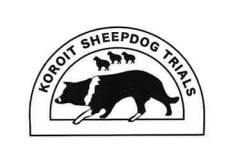Mycoplasma is a bacterial infection of cows and calves. There are several strains that can cause disease but Mycoplasma bovis is the most common. We have seen more Mycoplasma in the district over the last couple of years, and it is a disease that everyone should be aware of.
We see Mycoplasma disease present in several ways:
- Mastitis in cows, often recurrent and/or multiple quarters
- Joint infections in calves (and sometimes cows), often the swelling spreads up the leg
- Respiratory disease in calves and cows
- Ear infections (show up as tilted heads)
Less commonly, affected cows may abort or have swollen lymph nodes around the jaw (see photo below).

An example “worst case” scenario is the following that occurred in New Zealand in 2017:
- 200/380 dry cows with 4 quarter mastitis
- 35 cases of arthritis in lactating cows, front fetlock
- 100 cases of mastitis in lactating cows, 1+ quarters
- 100+ calves born with congenital Mycoplasma infection/meningitis
How does Mycoplasma spread?
Mycoplasma spreads through the respiratory secretions of clinically affected and carrier animals and also via contaminated milk and colostrum. It can enter the blood stream and travel from one body site to another. For example:
- A calf ingests contaminated colostrum from its dam, develops pneumonia, and sheds the bacteria in its respiratory secretions infecting other calves in the calf shed.
- A cow with subclinical mastitis enters the milking herd. Contaminated milk on the liners or milkers’ hands may infect other cows at milking time or, if the cow becomes clinical, unhygienic practices at treatment may spread it to the other animals in the sick/waste milk herd, including fresh cows. Note: if this waste milk is fed to calves, then Mycoplasma will spread to them too.
Not all animals infected with Mycoplasma will have clinical signs of disease, but they can still be shedding the bacteria. For example, some farms have presented with calf disease but not with a milk quality problem.
Why is it so nasty?
Mycoplasma’s structure means that it is resistant to most antibiotics. It can also camouflage itself from white blood cells and produce enzymes that damage these immune cells. Mycoplasma bacteria can cement themselves together in large numbers into a biofilm. This then provides protection from heat, drying out, white blood cells and antibiotics.
Mycoplasma infections will usually be unresponsive to antibiotic treatment and infected animals will need to be culled, directly to the abattoir or knackery – not through the yards.
What can you do to protect your farm from Mycoplasma?
Know that it exists! If you or your staff have any questions about how the disease spreads or the clinical signs that might be seen, please ask us.
Ideally keep a closed herd, and don’t ever use waste milk from another farm to feed your calves.
Monitor for Mycoplasma, especially if you regularly buy in stock. It is also worth investigating further if you feel your animals have mastitis, joint infections and/or respiratory disease that isn’t responding to antibiotics.

Mycoplasma is hard to culture in an ordinary lab – it will often present as lots of no growths from mastitis milk samples. Instead we can test for Mycoplasma in two ways:
- Looking for the DNA of Mycoplasma in the bulk tank or waste milk using a PCR test. You may have heard this described as a “Major 4” or “Complete 16”. The PCR test identifies the presence of Mycoplasma whether alive or dead. It is good to see that more farmers are asking about this test prior to purchasing cattle but it important that the PCR will only detect Mycoplasma if it is present in the sample. Infected animals that shed the bacteria intermittently may be missed, as will any cow not included in the sample/s.
- Growing the bacteria from infected milk or joint fluid in a specialised laboratory. Farmers can collect and freeze milk samples from clinical cases prior to treatment. A vet visit will be needed to take samples from joints and other tissues; these are then sent away for culture.
Talk to us to plan the most cost-effective testing and other key biosecurity steps to minimise the risk of Mycoplasma arriving on your farm.






























